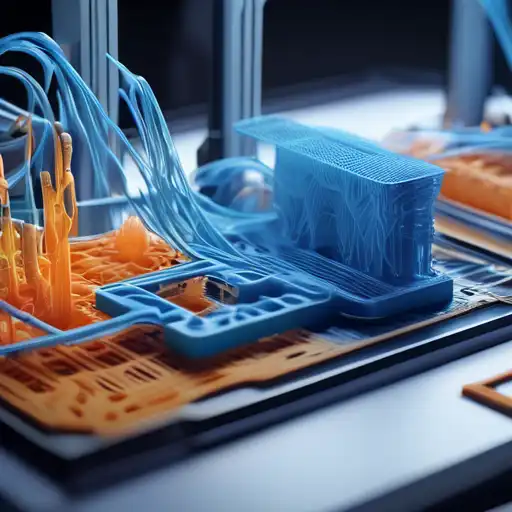The Revolutionary World of 3D Printing
3D printing, also known as additive manufacturing, has emerged as a groundbreaking technology that is reshaping industries, from healthcare to aerospace. By building objects layer by layer, it offers unparalleled flexibility in design and production, making it a cornerstone of modern manufacturing and innovation.
How 3D Printing Works
At its core, 3D printing involves creating three-dimensional objects from a digital file. The process starts with designing a model using computer-aided design (CAD) software. This model is then sliced into thin layers by specialized software, which the 3D printer reads to construct the object layer by layer. Materials used can range from plastics and metals to more unconventional substances like living cells.
The Impact of 3D Printing Across Industries
The versatility of 3D printing has led to its adoption across various sectors. In healthcare, it's used for creating prosthetics and even bioprinting tissues. The automotive and aerospace industries benefit from lightweight, complex parts that reduce weight and improve efficiency. Meanwhile, in the consumer sector, it enables customization at an unprecedented scale.
- Healthcare: Custom prosthetics and implants tailored to individual patients.
- Aerospace: Lightweight components that reduce fuel consumption.
- Automotive: Rapid prototyping and production of parts.
- Consumer Goods: Personalized products from jewelry to home decor.
Challenges and Future Directions
Despite its potential, 3D printing faces challenges such as material limitations, high costs for industrial-grade machines, and intellectual property concerns. However, ongoing research and development are addressing these issues, paving the way for more sustainable materials and faster, more affordable printing technologies.
The future of 3D printing is bright, with advancements like 4D printing—where objects can change shape over time—and the integration of artificial intelligence to optimize designs. As the technology continues to evolve, it promises to further revolutionize how we design, manufacture, and think about production.
For those interested in exploring more about how 3D printing is transforming industries, check out our latest articles on technological innovations.
Getting Started with 3D Printing
For beginners, starting with a simple desktop 3D printer and open-source design software can be a great way to explore the possibilities. Numerous online communities and resources are available to help newcomers navigate the learning curve and start creating their own 3D printed objects.
3D printing is not just a tool for manufacturing; it's a gateway to innovation, enabling creators and engineers to bring their visions to life layer by layer. As we look to the future, it's clear that 3D printing will continue to play a pivotal role in shaping our world.
